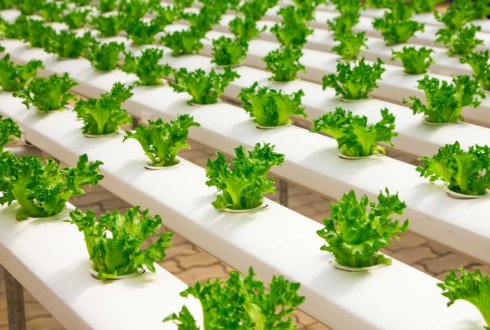Wageningen, The Netherlands
May 6, 2020

A system combining fish farming and vegetable cultivation may be the next step in urban farming and a circular and environmental friendly economy. Scientists at the University of Liège and their partners are working on a smart version of this system, which can be monitored by an app. Haïssam Jijakli, professor at the University of Liège discussed the work and progress during a webinar on 29 April.
The transition towards a circular economy is one of the challenges in creating a sustainable society with less waste products, minimal environmental impact and increased biodiversity. Crises, like the coronavirus crisis we are experiencing now, can influence this economy. For example by increasing the focus on local food production. Aquaponics could be a major contributor to this.
Fish and crops in one system
Aquaponics is a production system that combines fish and crop farming. Microorganisms in the system convert the fish’s waste into nutrients for plants. This way, the plants and microorganisms purify the water, creating an appropriate environment for the fish. The idea is that these beneficial interactions will decrease the environmental impact of fish and crop production. ‘Such modern aquaponics system utilizes about 500 liter of water per kilo of fish, while in open rivers this is 190 000 liters’, Jijakli explains.
Bottlenecks
While promising, there are still some bottlenecks to work out according to Jijakli. For example, in fields and in fish farms, farmers use pesticides and antibiotics respectively, to treat or prevent diseases. However, legislation does not allow the use of antibiotics when growing plants, nor the use of pesticides in fish farms. ‘Then the tricky part is to control diseases in a system that includes both fish and crops’, Jijakli says.
Luckily, scientists showed that the aquaponics systems appears to have solved this particular problem itself. Researchers designed an experiment with the plant pathogen Pythium, which causes a common crop disease leading to root rotting. While plants grown in water were seriously damaged, plants in the aquaponics system appeared unaffected. Only when the researchers filtered out the microorganisms in the system, the pathogen was able to harm the plants. ‘While we do not know exactly how, it appears that the microorganisms in the aquaponics system, protect the plants against plant pathogens’, Jijakli says.
Serious gaming
Aquaponics is not restricted to large industrial systems. ‘They come in all shapes and sizes’, Jijakli says. ‘Some are used for education in secondary schools, but you can also find somewhat bigger systems in restaurants.’ And soon everyone at home can start his or her own aquaponics system. In an app. Jijakli describes this app as serious gaming: with the simulation game, future practitioners can educate themselves and get familiar with aquaponics.
‘But it is not all just fun and games’, Jijakli says. The app also assists those who are designing an actual system. ‘You can build your design in the app and simulate different scenarios’. Finally, once up and running, the users can connect the application to their aquaponics system, which allows them to monitor the system and even anticipate errors or accidents.
‘We expect to launch a beta test at the end of 2020 and release the application by the end of 2021’, Jijakli says. So in two years we may see an increase in smart aquaponics integrated in urban farming and be one step closer to a circular economy.
Student Challenges
This lecture was part of the Future of Urban Farming series and organised by WUR Student Challenges in collaboration with GROOF project as part of the Urban Greenhouse Challenge. The next webinar in this series will take place mid May. Keep an eye on our calendar and our socials for updates and participation.
Subscribe to our newsletter